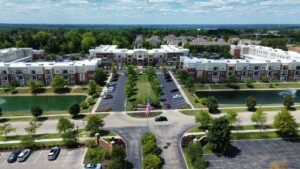The decision to replace your old heating or cooling system is not an easy one. The sticker shock alone is enough to make anyone think twice about upgrading. Your heating and cooling systems may be over 10 years old, but they still work just fine, so why spend the money?
Then, the inevitable happens. It’s mid-January and your heating system decides to call it quits. You immediately call out a technician and they give you a rundown of your options: repair or replace. The repair is less expensive than the replacement, so you may be inclined to go with Option Number 1, but take a look at some of these potential costs of keeping your old heating or cooling system before you make a final decision.
The safety of you and your family
Materials have a tendency to break down over time, even if you take pristine care of your heating and cooling systems. Repairing old systems with new parts is not always a good idea. For example, if your 15-year-old furnace has a cracked heat exchanger, poisonous carbon monoxide gas could work its way into your air supply. You could try replacing the heat exchanger, but repairing the core of an older system that includes a lot of other components that are likely to fail or leak within a few years is a risky gamble. In this case, investing in a new furnace will actually protect your family from harm.
Your utility bills
Recent advances in technology have drastically improved the energy efficiency of heating and cooling systems. Before repairing your old system, you should find out its Annual Fuel Utilization Efficiency (AFUE) number. This number measures the percentage of fuel that is converted to heat rather than being lost through inefficiencies. A 20-year-old system may only have an AFUE of 70%. The minimum AFUE number today is 80%, which means that replacing your old system with a new one will burn 10% less fuel and save you up to 10% on your energy bills. There are systems that have AFUE numbers of up to 97%, so your new high-efficiency model may end up paying for itself.
Maintenance and repairs
It’s no secret that older heating and air conditioning systems will likely require more repairs. The average lifespan for a forced-air furnace system is 10 to 20 years while an air conditioner usually lasts 10 to 15 years. If you are constantly calling out technicians to tweak or repair your heating or air-conditioning unit, you have probably spent more than the replacement cost would have been. A general guideline to follow when it comes to repairing vs replacement: consider replacement if the equipment is beyond three-quarters of its life expectancy and repairs will cost more than one-tenth of the replacement cost.
Keeping your old air conditioning or heating system may save you money in the short run, but you will most likely end up spending a lot more in the long haul. For accurate inspections and honest efficiency assessments, contact CJS Heating and Air today!
Set up a professional inspection for your current system by calling (614) 482-2470 today!
FAQs
How much can I expect to spend on maintaining an old heating and cooling system?
The maintenance cost can vary based on the age of the system and the frequency of repairs, but it’s not unusual for older systems to require costly repairs each year. Routine maintenance may cost between $150 to $500 annually, but unexpected repairs can significantly increase this amount.
How much can an old system increase my energy bills?
Older heating and cooling systems are typically much less energy-efficient than newer models. You could see energy bills that are 20-30% higher than with a modern, more energy-efficient system.
How long do heating and cooling systems last?
Most heating and cooling systems last 10-15 years. After this point, the system’s efficiency may significantly decline, and repair costs may increase.
Should I repair or replace my old system?
If your system is over 10 years old and needs frequent repairs, replacing it with a more energy-efficient model can be more cost-effective in the long run. Consider the cost of repairs versus the price of a new unit and potential energy savings when making your decision.
Can keeping an old system affect my home’s comfort?
Yes, older systems can struggle to maintain a consistent temperature, and they may fail to cool or heat the space as effectively. This can impact your comfort, especially during extreme weather conditions.
Are there any benefits to keeping an old system?
In some cases, keeping an older system can be cost-effective in the short term, especially if it's still running efficiently and requires minimal repairs. However, this is often outweighed by the higher energy bills and eventual breakdowns.
Will I face any issues with warranties or parts availability for old systems?
As systems age, finding replacement parts can become more difficult, and warranty coverage may be limited or no longer available. This can lead to longer downtimes and increased repair costs.
What are the long-term costs of keeping an old system?
The long-term costs of keeping an old system can include higher energy bills, frequent repairs, and eventually needing a full replacement. These costs can add up, making it more economical to upgrade to a new system sooner rather than later.
How can I reduce the costs of an old system?
Regular maintenance, including cleaning and replacing filters, checking for leaks, and ensuring the system is properly calibrated, can help maintain efficiency. However, if the system is more than 15 years old, replacement is often the most cost-effective option in the long run





